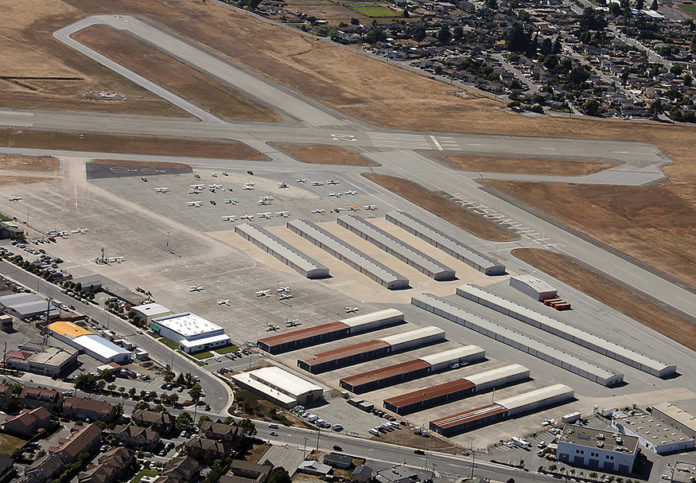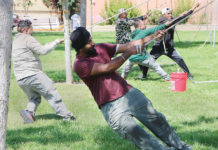
On both sides of Watsonville Municipal Airport’s two runways lay so-called airport safety zones, where development is either limited or restricted.
With limited space left for the city to develop—and with mandates for new housing from the State of California—those safety zones will be at the heart of a conversation Tuesday when the Watsonville City Council meets to decide the fate of the shorter crosswind runway.
What is a crosswind runway?
While most airports align their main runways so that pilots can take off and land into the prevailing winds, there are times when the winds shift, thus making it harder for smaller planes to maneuver as winds blow perpendicular to the runway.
The crosswind allows aircraft that need it to turn into that wind and safely land.
Why shorten the runway?
In 2018, the Federal Aviation Administration told Williams that a row of hangars potenuially blocks visibility for pilots on the opposing runways.
Since the airport does not have a control tower to direct operations, the intersecting runways require visual line-of-sight for takeoffs and landings.
The FAA agency agreed to provide $500,000 for a so-called “threshold relocation,” but later withdrew that offer for economic reasons.
This leaves Watsonville Airport with the need to address the visibility issue on its own.
What is on the table?
The council will be faced with two options: shortening the crosswind runway by 1,500 feet, or deactivating it entirely.
Both choices would open up development potential on both ends of the runway.
But Airport Director Rayvon Williams says that deactivating the crosswind runway would take away an asset that makes the airport desirable for new businesses and users, and thus bringing in new revenue.
“The lifeblood of the airport are the operations,” he says. “It’s an economic driver.”
The airport has $5 million in annual self-generated revenue, which has grown from $2.8 million when Williams took over in 2011. That’s thanks to aircraft fuel sales, and from leasing hangar space and commercial property.
But it also creates $67 million in total economic benefits for the city.
“The city recognizes the airport as an asset,” Williams says.
Still, there have always been undercurrents of malcontent among some city officials regarding the airport and its impact on broader economic development. In October, then Mayor Eduardo Montesino referred to the airport as a “a playground for rich people to have an airplane.”
That is a sentiment that Williams hopes to debunk.
While corporations such as Driscoll’s Berries, Sweet Darling, Cal Giant and Well-Pict use the airport as their airbase, most of the hangars—and indeed most of the 60,000 operations per year—are used for activities such as flight training.
“People have learned to fly here and gone on to the Air Force academy,” Williams says. “People have learned to fly here and gone on to the military. Those aren’t rich people. Those are people who are coming here to learn to fly. This is a heavy training environment.”
The airport also serves as a base for Angel Flight West and Los Médicos Voladores–the Flying Doctors.
Additionally, it was a base of operations during disasters such as the 1989 Loma Prieta Earthquake and the CZU fire in 2020.
“What people see are these small single-engine aircraft,” Williams says. “There is a misunderstanding that they all belong to rich people.”
Williams says that the city must now balance its need for growth with the need to support the airport.
While he was hoping for a third option of shortening the runway by just 870 feet, the council opted in October to consider just two options—deactivation or reducing it by 1,500 feet, which would reduce the runway down to 2,400 feet. This, Williams said, would be “a challenge.”
“But it’s better than nothing,” he says.
Watsonville City Manager Rene Mendez says that it’s too early to tell what the economic impact would be from either deactivating or shortening the runway.
But part of the Airport Master Plan, he says, also includes possibly extending the main runway, thus opening the facility up for larger planes and more industries.
“It’s hard to say, because at the same time we’re looking at the crosswind runway, we’re also looking at how we can maximize the potential of the airport,” he said. “I don’t think it means we would have less, in fact we might have significantly more opportunities as we develop the airport.”
The Watsonville City Council will meet on Tuesday at 6pm on the top floor of the Civic Plaza at 275 Main Street. For information, click here or visit /bit.ly/3vr6PTU.












With people leaving California, perhaps the mandates from the state to build more housing, should be reconsidered.